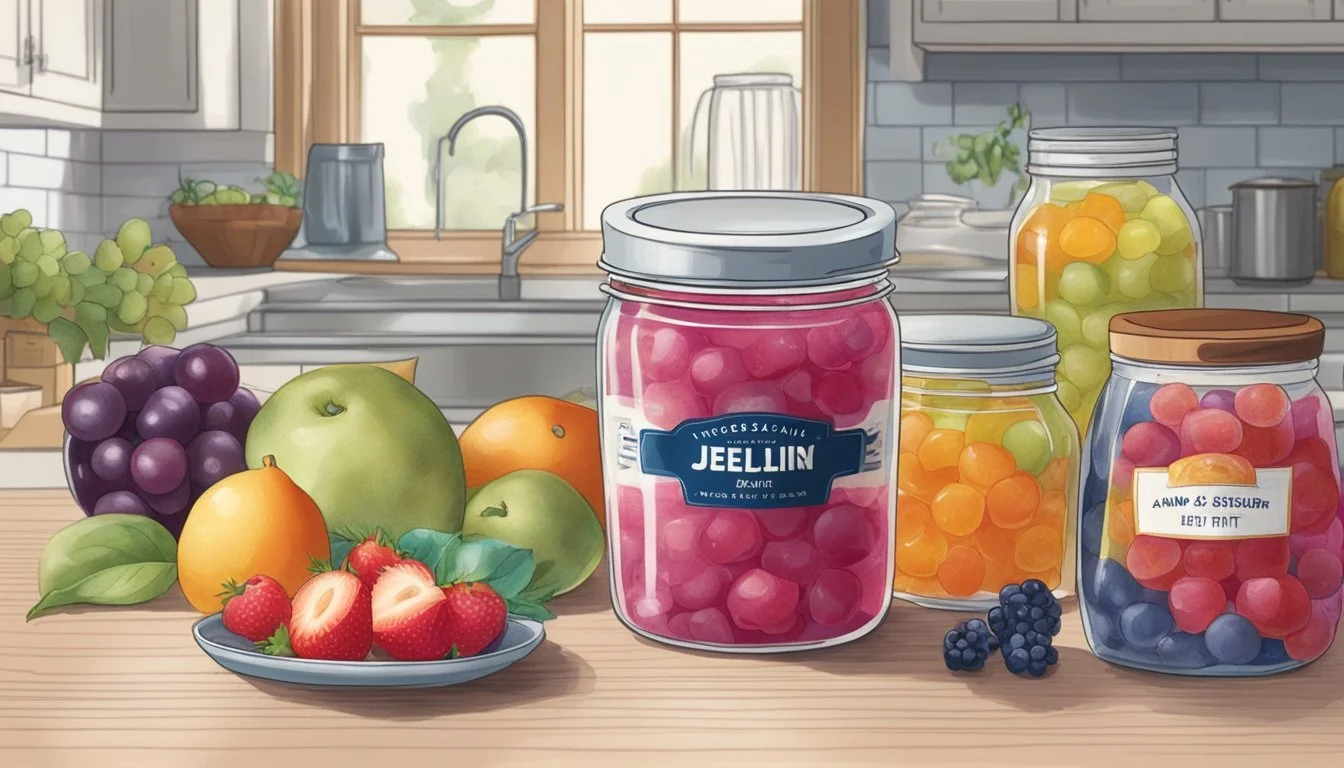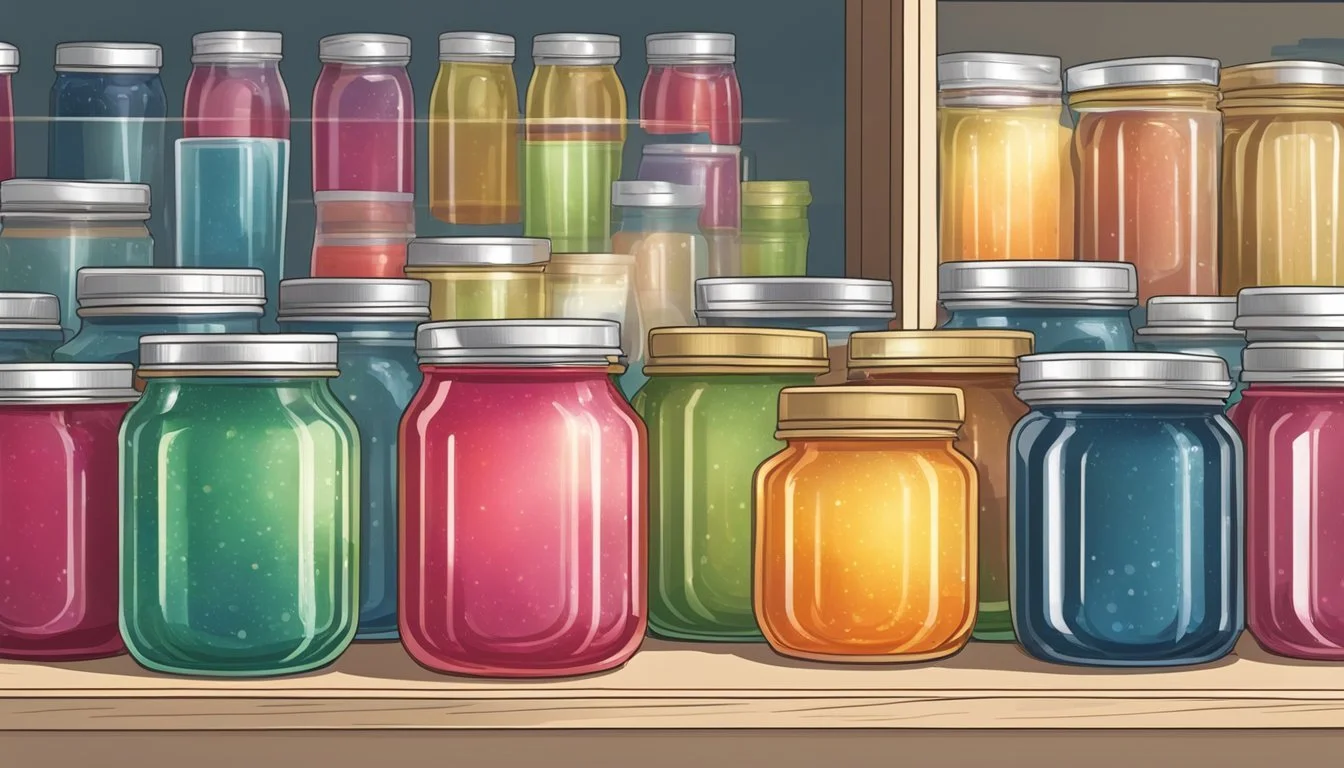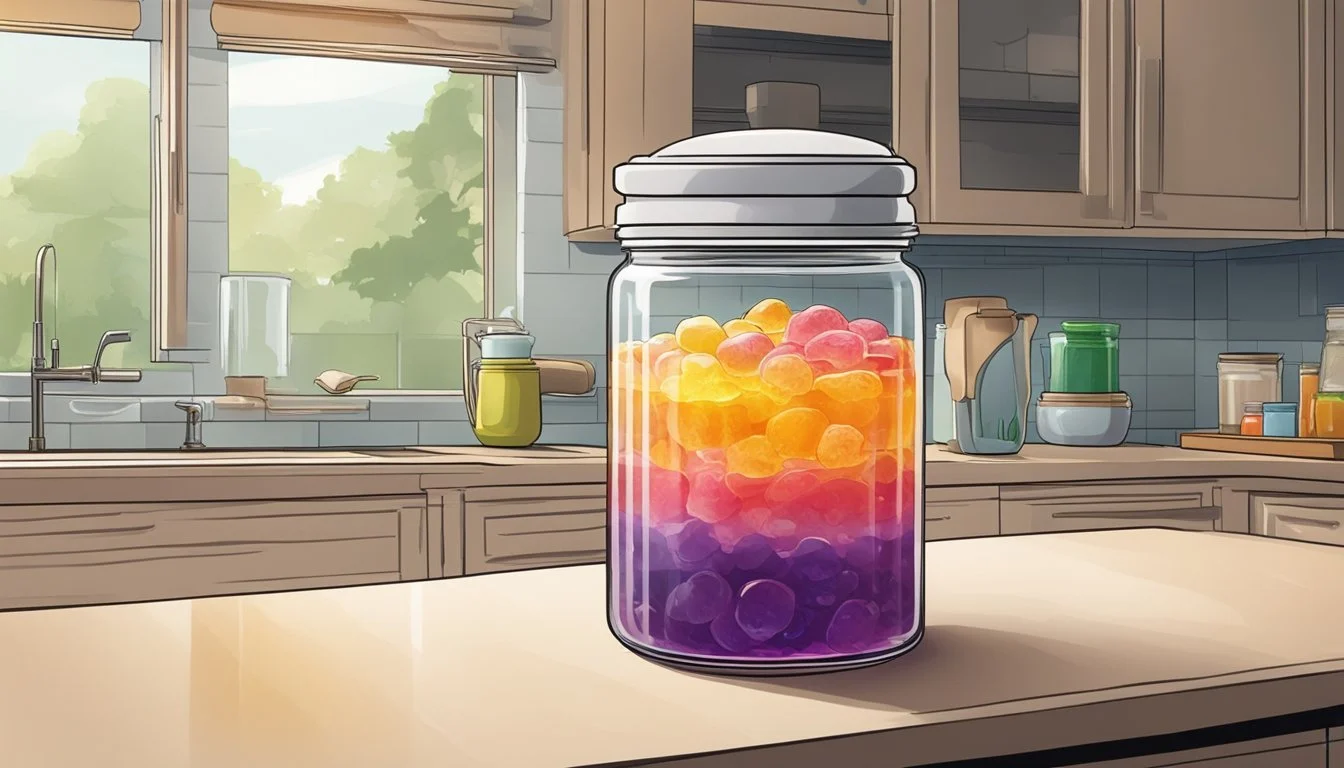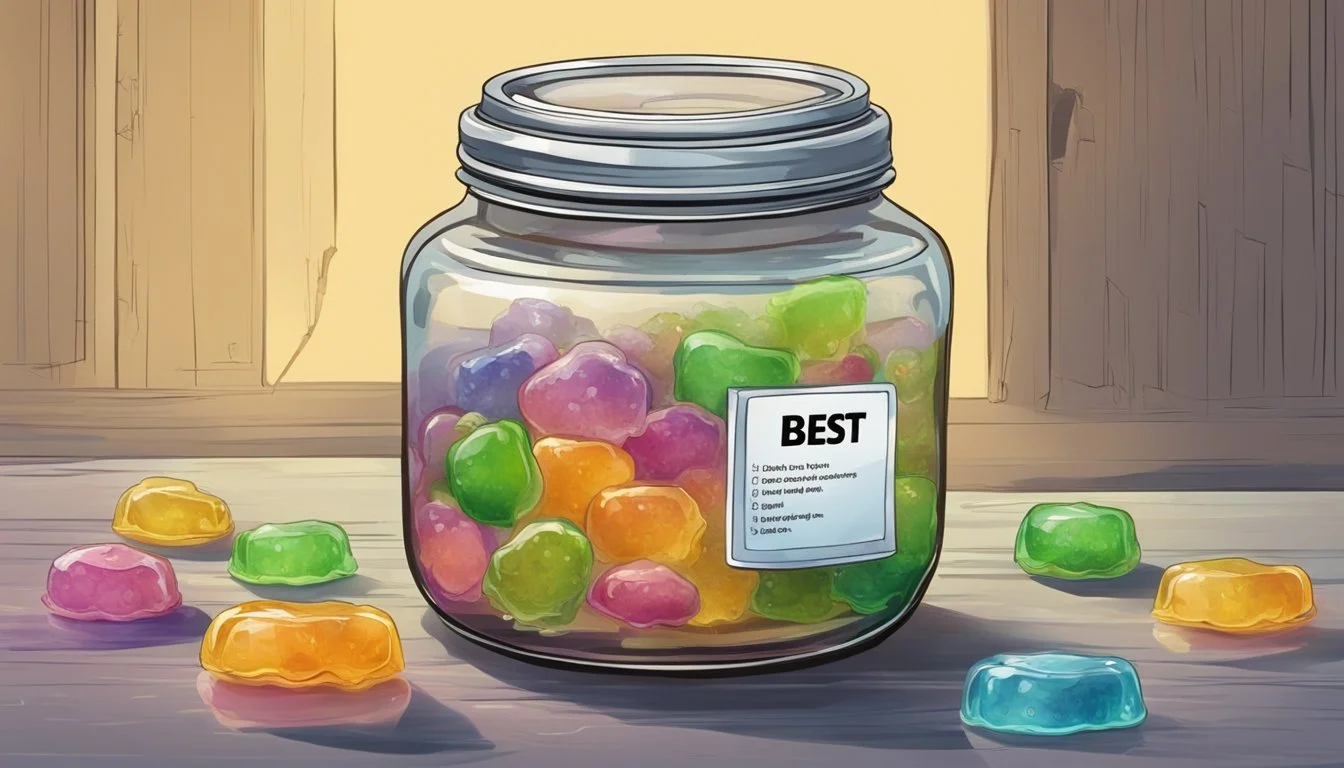Does Jelly Go Bad?
Shelf Life and Storage Tips
Yes, jelly can go bad. The shelf life of jelly is influenced by factors such as storage conditions and preservatives. Jellies are typically high in sugar, which acts as a preservative and helps extend their freshness. Despite that, signs of spoilage include an off odor, mold growth, or significant discoloration.
Proper storage is crucial for extending the life of jelly. Keeping jelly in a cool, dry place, and using sealed containers can help prevent spoilage. Once opened, it's advisable to refrigerate jelly to slow down the growth of mold and bacteria. Opened jelly generally lasts about six months in the refrigerator.
Consumers should always check for signs of spoilage before consuming jelly. Even unopened jelly can go bad if stored improperly. Mold, a foul smell, or an unusual taste are clear indicators that the jelly should be discarded. By following simple storage tips, one can enjoy jelly for a longer period while maintaining its quality.
Understanding Jelly and Its Ingredients
Jelly is a beloved sweet treat that captivates with its texture and flavor. Key aspects of jelly composition, the role of sugar and preservatives, and the significance of fruit content are critical for grasping its nature and attributes.
Jelly Composition
Jelly primarily consists of fruit juice, sugar, and pectin. Pectin serves as a gelling agent that gives jelly its characteristic structure. Different types of fruit may be used, each contributing unique flavors.
Typically, commercially available jellies also include citric acid to adjust pH levels, improving the gelling process and taste. Homemade jellies may have fewer ingredients but rely heavily on precise fruit and pectin ratios to achieve the desired consistency.
Role of Sugar and Preservatives in Jelly
Sugar plays a dual role in jelly – acting both as a sweetener and a preservative. Sugar binds with water molecules, reducing the availability of water that can promote microbial growth.
Preservatives, such as sodium benzoate or potassium sorbate, may be added to extend shelf life. These compounds inhibit the growth of mold and yeast, ensuring the jelly remains safe for consumption over more extended periods.
The Significance of Fruit Content
The fruit content in jelly can vary, affecting both flavor and nutritional value. High fruit content jellies offer more intense flavors and often contain higher levels of vitamins and antioxidants.
Fruits like berries, citrus, and apples are popular due to their natural pectin content. However, the balance of fruit to other ingredients is crucial. Excessive fruit can lead to a runny texture, while too little fruit fails to deliver the desired taste.
Well-crafted jelly not only delights the palate but also maintains stability and safety through carefully balanced ingredients. By comprehending the composition and roles of each component, one can appreciate the intricate process of creating this enjoyable spread.
Factors Influencing Jelly Shelf Life
Several factors determine how long jelly can remain safe and consumable. These include sugar content, acidity, the distinction between commercial and homemade jelly, and the presence of preservatives.
Sugar Content and Acidity
The sugar content in jelly plays a pivotal role in its preservation. High sugar levels act as a natural preservative, binding water and inhibiting microbial growth. This extends the shelf life significantly.
Acidity, measured by pH, also impacts longevity. More acidic jellies create an inhospitable environment for bacteria and mold. Hence, jellies with higher acidity tend to last longer without spoiling.
Both sugar and acidity create a double barrier against spoilage, maximizing the product’s shelf life.
Commercial Jelly vs. Homemade Jelly
Commercial jelly usually has a longer shelf life than homemade jelly due to controlled production environments and the use of preservatives. Manufacturers follow stringent guidelines to ensure consistency and safety.
In contrast, homemade jellies lack these preservatives and are often made in less sterile setups. This makes them susceptible to contamination and spoilage more quickly.
Storing homemade jellies in the refrigerator can extend their life, but they generally do not last as long as their commercial counterparts.
The Impact of Preservatives
Preservatives are crucial in prolonging the shelf life of jelly. Commercial jellies often contain preservatives like potassium sorbate and sodium benzoate to inhibit microbial growth and prevent spoilage.
These chemicals extend the product's usability significantly compared to homemade versions, which may rely solely on traditional preservation methods like high sugar content and proper canning techniques.
While some consumers prefer preservative-free jelly for health reasons, it’s important to note that these jellies should be consumed faster and stored properly to avoid spoilage.
Proper Storage Techniques for Jelly
Proper storage is crucial for maintaining jelly's quality and extending its shelf life. This guide covers the best practices for storing both unopened and opened jelly, as well as specific tips for low-sugar and homemade varieties.
Unopened Jelly Storage
Unopened jelly should be kept in a cool, dry place like a pantry or cupboard. Avoid exposing it to direct sunlight, as light and heat can degrade the quality. The typical storage temperature should remain at room temperature, around 68-77°F (20-25°C). For best results, ensure the storage area is well ventilated to prevent the growth of mold or yeast.
Shelves and cabinets are ideal, but a cellar or basement can also work as long as it’s dry. Always check the expiration date before consumption, even if it’s been stored properly.
Opened Jelly Storage and Refrigeration
Once a jar of jelly has been opened, it should be refrigerated. Keeping opened jelly in the fridge helps maintain its texture, color, and flavor. Ideally, the refrigerator temperature should be set at 35-40°F (1.7-4.4°C).
Refrigeration extends the shelf life to up to six months. Place the jar on a middle shelf, not in the door, to maintain a consistent temperature. Always use a clean spoon to avoid contamination and tightly seal the jar after each use. High-sugar jellies have natural preservative qualities but still benefit from being kept cool.
Storing Low-Sugar and Homemade Varieties
Low-sugar and homemade jellies are more susceptible to spoilage. These varieties should always be refrigerated once opened and can even be stored in the fridge immediately after preparation to ensure longevity. They generally last for 1-2 months due to the lower sugar content, which acts as a preservative.
For homemade jelly, hot-water canning is a recommended method to extend shelf life before opening. Follow proper canning practices to ensure a good seal. After opening, store in the refrigerator and consume relatively quickly.
By adhering to these storage techniques, one can ensure the jelly remains safe and enjoyable for as long as possible.
Identifying Spoilage in Jelly
Detecting spoilage in jelly involves visual inspection, evaluating its smell, and examining its texture for any changes. Knowing these signs can help prevent the consumption of unhealthy or unsafe jelly.
Visual Signs of Spoilage and Mold Growth
Spoiled jelly often exhibits noticeable changes in its appearance. Discoloration is a key indicator; jelly that has turned darker than its usual hue should be approached with caution. Additionally, mold growth can signal spoilage. This often manifests as white fuzzy patches on the surface.
Another visual cue is the separation of ingredients. If the jelly has begun to separate and appear watery, it's a sign that it may no longer be suitable for consumption. These visual changes are clear indicators that the jelly has gone bad.
Odor as an Indicator of Spoiled Jelly
Odor plays a significant role in identifying spoiled jelly. Jelly should have a consistently pleasant, fruity smell. When it develops a sour or off-putting odor, it suggests spoilage. An off odor is a clear warning that the jelly has gone bad.
An unpleasant smell often precedes other signs of spoilage. Therefore, if the jelly emits a strange or sour scent upon opening the jar, it's best to discard it immediately.
Texture and Consistency Changes
Texture and consistency shifts are crucial in determining the freshness of jelly. Fresh jelly is typically smooth and even. Spoiled jelly, however, may exhibit a strange taste or feel gritty.
Changes in consistency like becoming overly watery or lumpy are concerning. These alterations, along with other signs such as a gritty texture or a lumpy consistency, indicate that the jelly has deteriorated and should not be consumed.
By monitoring these signs, one can effectively gauge the quality and safety of jelly, ensuring it remains enjoyable and safe to eat.
The Safety and Quality Concerns of Expired Jelly
Expired jelly can raise concerns regarding food safety, shelf-life, and texture changes. Spreading spoiled jelly on your toast can pose health risks due to bacteria and molds.
Food Safety and Potential Risks
Expired jelly can harbor dangerous bacteria and molds. Yeasts may ferment the jelly, altering its safety and taste. Bacterial spores might flourish in expired jelly, leading to toxic compounds.
Mold growth can cause food poisoning or gastrointestinal issues. The spoilage signs are often visible or detectable by smell. Prioritizing food safety by inspecting jelly before consumption can prevent these risks.
Can I Eat Expired Jelly?
Jelly expiration doesn't mean it's immediately inedible. Unopened jelly might last beyond its expiration date, retaining its freshness and peak quality.
However, once opened, its shelf-life shortens, and it should be refrigerated. Eating expired jelly without spoilage signs—such as off odor, color changes, or mold—is typically safe.
Yet, caution is necessary because expired jelly's quality degrades, and even if it looks safe, consuming it poses a risk. Always check for spoilage indicators before deciding to eat expired jelly.
Preservation Methods Beyond Standard Storage
Different methods can be used to preserve jelly and extend its shelf life. Besides standard refrigeration, canning, freezing, and the use of alcohol can effectively maintain the jelly's quality over time. These methods ensure that jelly remains safe and flavorsome for longer periods.
Canning and the Importance of Boiling Jars
Canning is a well-known method for preserving jellies, jams, chutney, and fruit butter. Boiling jars plays a crucial role in this process by sterilizing the containers, which prevents bacterial growth.
To can jelly, it's essential to use high-quality glass jars and lids. Boil the jars and lids in water for at least 10 minutes to ensure sterilization. Once the jelly is poured into jars, a water bath canning method helps seal them properly. This involves placing the filled jars in a pot of boiling water for a specific period, depending on the altitude and jar size. Proper sealing is vital to prevent contamination and spoilage.
Utilizing Freezing as a Storage Method
Freezing jelly is another effective preservation method. This technique significantly slows down the growth of bacteria, mold, and yeast, keeping the jelly fresh for extended periods.
Before freezing, transfer the jelly into airtight containers, leaving some space for expansion. Glass jars, plastic containers, or freezer bags can be used. Label the containers with contents and the date of freezing. When ready to use, thaw the jelly in the refrigerator to maintain its texture and flavor. Freezing is particularly useful for homemade jellies that might not contain preservatives.
The Effects of Alcohol on Jelly Preservation
Alcohol can act as a preservative in jelly, preventing microbial growth. This method is often utilized in certain recipes where flavor enhancement is also desired.
Incorporating alcohol, such as brandy or rum, into jelly recipes can extend their shelf life. The alcohol content should be at least 20%, and only a small amount is needed. Add the alcohol during the cooking process to ensure it blends well. This preservation method not only enhances the flavor but also reduces the likelihood of spoilage.
Using these preservation techniques can help maintain the quality of jelly, adding both longevity and enhanced taste to the spreads.







